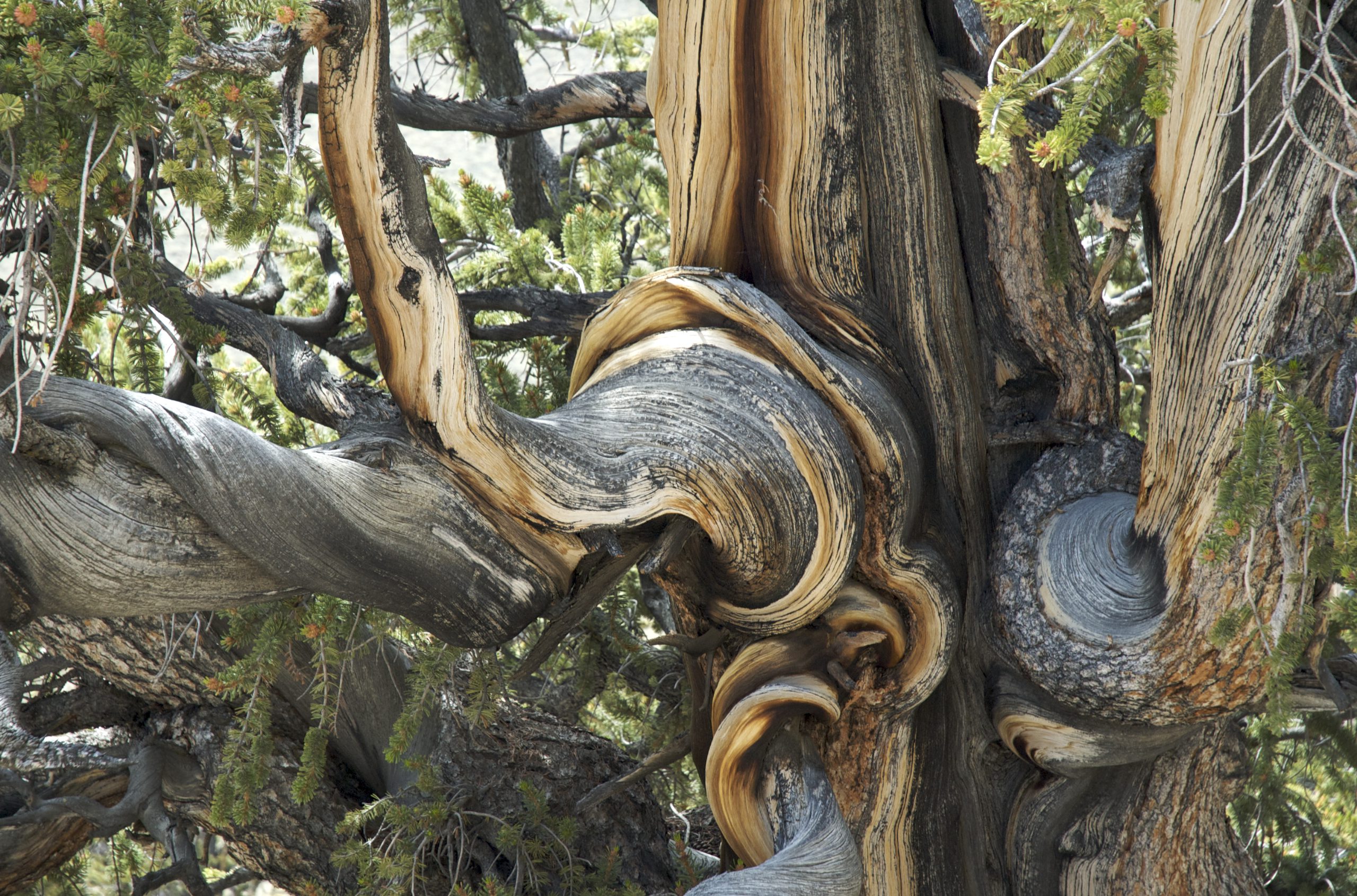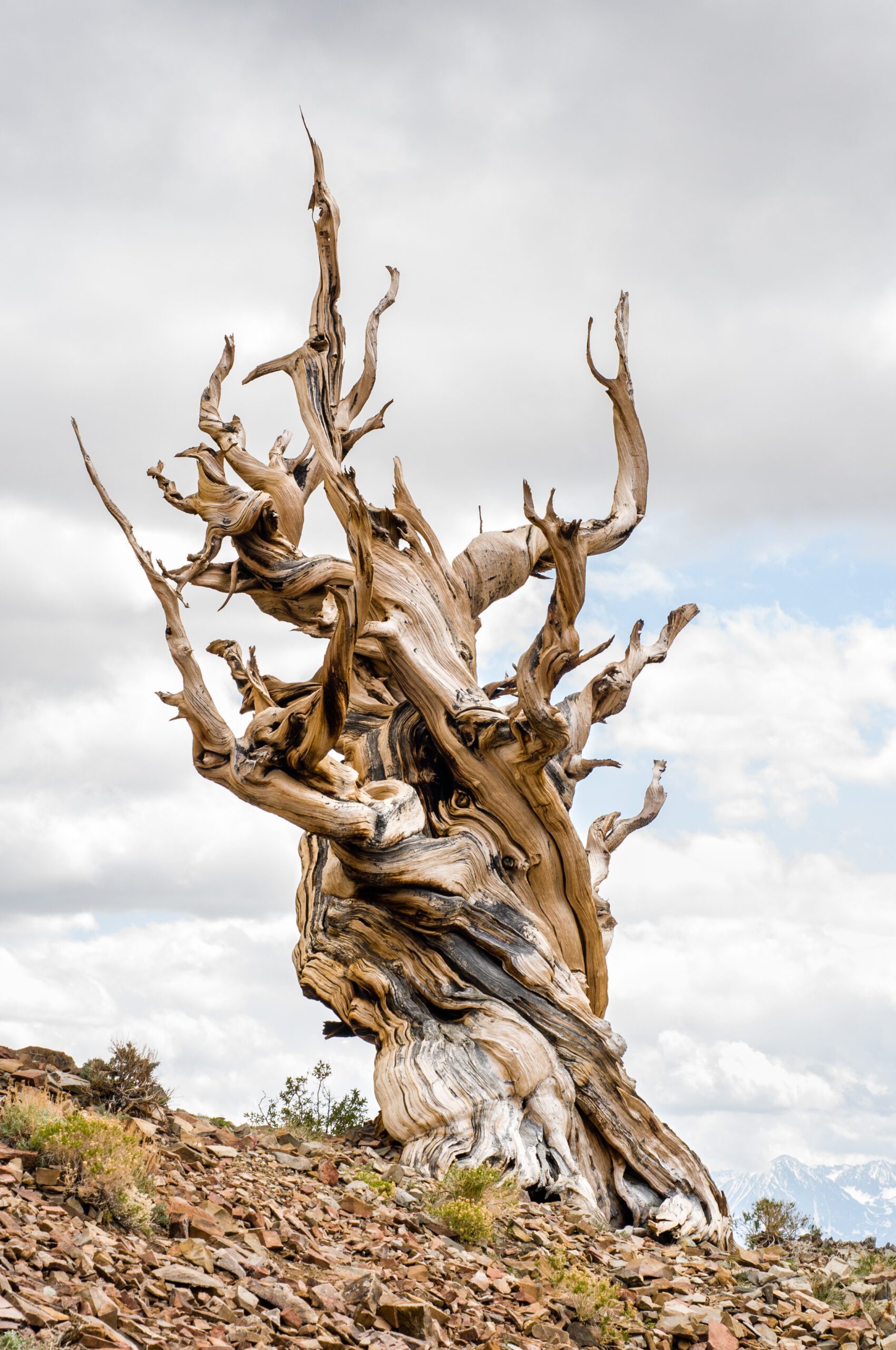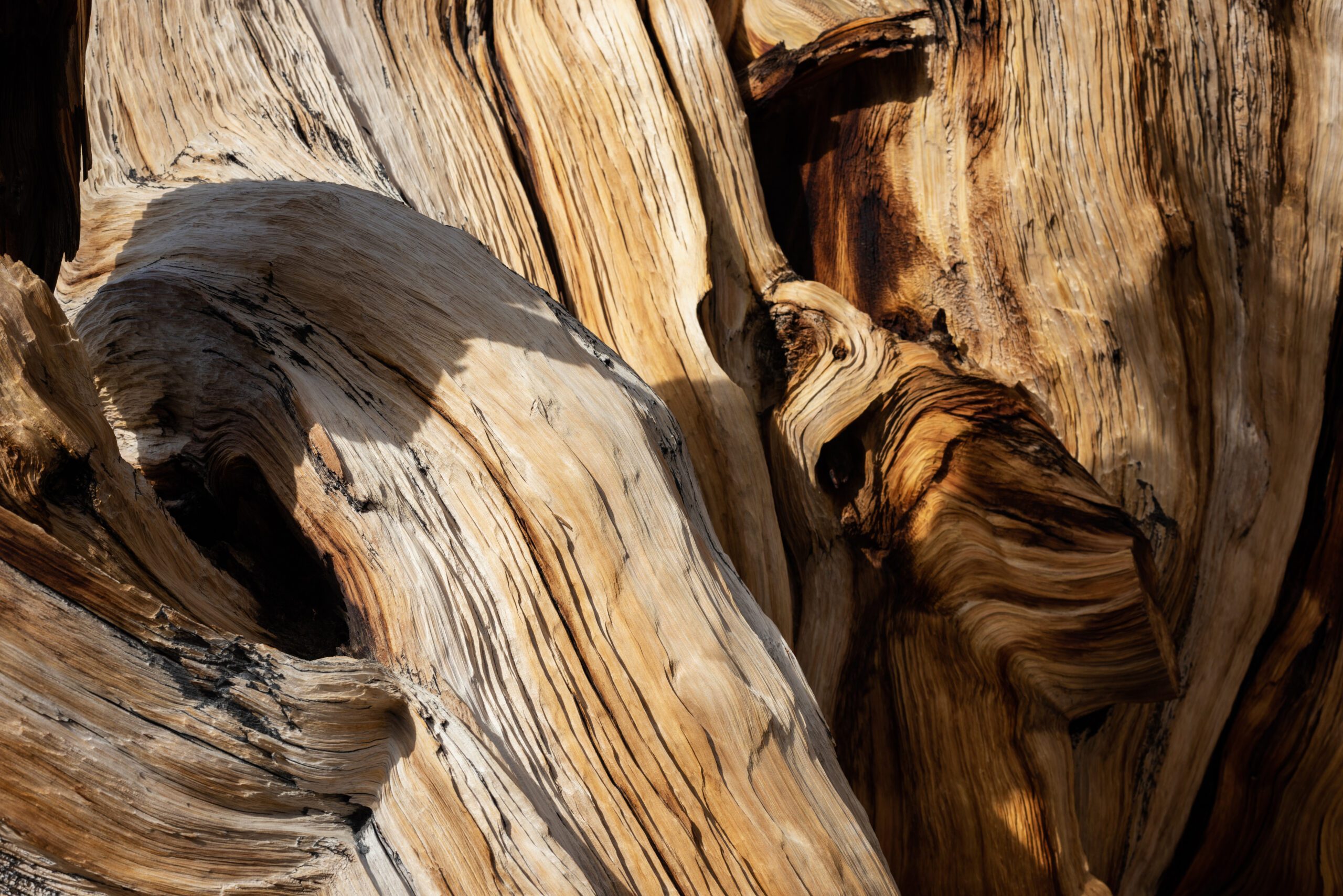Gnarled with age, torqued and withered stands Methuselah, an ancient bristlecone pine (Pinus longaeva) that has survived California’s inhospitable Inyo National Forest for the past 5,000 years. Researchers are fascinated by what intrepid trees like this one can teach us about aging, and the relationship between time and biology. The big take-away: “You don’t have to get old,” as one of Harvard Medical School’s top aging experts David Sinclair has said.
What doesn’t kill you…
The old adage is true. The extreme temperatures, drought and soil nutrient deficiencies found in the White Mountains seem to encourage long-lived species like the bristlecone pine to live even longer. A harsh environment turns on the organism’s defenses against aging, and so the bristlecone grows very slowly, while perpetually regenerating the tissues that allow water and nutrients to circulate. “Imagine if we could regenerate our lungs and circulatory system every year,” one researcher explained.
 Bristlecone Pine Trees are the oldest living organisms on the planet.
Bristlecone Pine Trees are the oldest living organisms on the planet. Trees are kin. And yet, we share enough DNA and RNA with these tree species to glean from them certain genetic clues that may help us extend human life through biomedical intervention one day. “We can engineer ourselves to be that long lived,” David Sinclair has promised. Some researchers study the ways the trees add to their trunks, comparing the process to human bone renewal. Others investigate the trees’ meristems, which initiate new growth on the roots and shoots, somewhat like our stem cells.
The harsh truth. Until researchers find a magic pill, benefitting from the bristlecone pine may not be very pleasant. Emulating the rough conditions that stimulate the tree’s longevity through the processes of “hormesis”— intentionally stressing the body—we can turn on the body’s defense systems and reap the rewards. Just as the bristlecone pines like Methuselah are rooted in a terrain that offers meager nutrition, fasting, a common practice among many Blue Zone populations, has been shown to extend human longevity.
 Great Basin Bristlecone Pine (Pinus longaeva) in Ancient Bristlecone Pine Forest in the White Mountains of Inyo County, CA.
Great Basin Bristlecone Pine (Pinus longaeva) in Ancient Bristlecone Pine Forest in the White Mountains of Inyo County, CA. Millennial might. Beyond a scientific interest in long-living trees’ senescence, researchers are also discovering that they play a crucial role in counteracting climate change. Older, larger trees make up most of the biomass of the worlds’ forests, and older trees in general are thought to store more carbon than younger ones. Conservationists believe these “long-lived pioneers” hold a very direct link to our future.
 Wooden bark of old bristlecone tree.
Wooden bark of old bristlecone tree. Humans love too much. A bristlecone pine is more likely to die from insect damage or wildfire than old age—that is, if human intervention doesn’t do them in first. When overzealous park visitors began cutting away parts of Methuselah to take home as souvenirs, California forest service officials stopped sharing Methuselah’s exact location.


